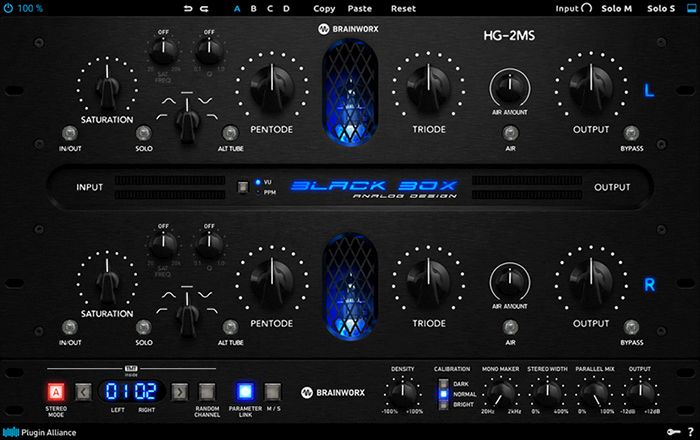Review Yum Audio Ember

I’ve been a fan of Yum Audio’s Lofi series and effects for some time. These tools allow you to add a certain touch to boring samples and take them to another level. That made me even more excited about Ember, Yum Audio’s first synthesizer.
Yum Audio Ember is a “vibe-driven” polyphonic soft synth that delivers on its promises of rich, distinctive sound, vintage textures, and analog warmth. This VSTi adds warmth and vigor to every sound, whether you’re creating gritty old textures or contemporary tones. Its user-friendly and super modern-looking interface offers you great opportunities for sound exploration and creativity by enabling you to effortlessly create expressive, rich tones that go beyond the typical synthesizer sounds.
Especially if you like to run synths through tape cassettes, or use analog synth and modular systems, Ember delivers. It offers that kind of nitty-gritty sound that you would get from a real analog synth or even a modular system with all the inaccuracies that characterize these tools.
Yum Audio Ember is a synth with three oscillators, each of which has a single waveform. A mixer with configurable pulse width is available for sawtooth, triangle, and square waves. In addition, there are two controls for a comparatively simple type of frequency modulation and a sub-oscillator. So quite basic stuff here. An interesting feature of the oscillator part is the saturation circuit, which adds harmonics to the output by assisting in the summation of their blended sound.
Under Circuit you will find the categories “Wear” and “Stability”. Wear contains the parameters Age and Rust with a super easy-to-use X-Y controller. When you set this marker to aging you are going to have a very clean sound. But the more you introduce the rust, you are going to have a more destroyed kind of sound. And I really like this kind of distortion. It sounds different than I expected, but great! More detuning and general instability were added to the sound by stability. If we set it to 100%, this analog synth is incredibly tattered and worn.
The effects suite turns out to be Ember’s secret weapon, as Yum Audio has already released some fantastic plugins in this area. You get Crackle, Chorus, Ripple, Compress, Heat (kind of distortion), Echo (Delays), and Space (Reverb), again in combination with a simple and intuitive X-Y controller. And yes, this is where the magic happens! So all in all you could claim that the circuit provides you with a lot of analog wear and tear or tape simulation.
The lower section contains envelope, drift, and arpeggiator. For me, drift is a particularly noteworthy feature since it introduces delicate movement across a number of settings, including the master controls. This gives even the most basic patches dimension by producing dynamic, changing sounds that seem natural and alive. It creates exactly the inaccuracy that everyone knows from analog synths.
The extensive presets (+200) cover everything you need to create organic aspects in your production, effectively showcasing Ember’s strengths. With its different “spice levels,” the randomization tool gives the sound design process a unique surprise aspect.
I feel that Yum Audio Ember has a really great start for a synth or this kind of inspired plugin. It is fundamentally not that easy to create this kind of sound, which I often notice when I produce these kinds of organic samples. Very targeted layering in combination with noise effects, sidechaining, various effect plugins, and a lot of experience is required. Ember offers a really interesting approach here because you can achieve the desired result very quickly and intuitively. I really like how you can make the sound imperfect. Perhaps you can get the sound as well if you already have their lo-fi effects. But the fact that they built all of these degradation processors onto their first synth is very amazing. I prefer having a single plugin for everything. It is a fast synth toolbox for sounds that drift.
Ember skillfully combines contemporary digital accuracy with vintage analog warmth. It offers a wide range of possibilities for producing sounds that are incredibly old, shredded, and gritty while maintaining an odd steadiness. This organic sound, in particular, is ideal for ambient, synth-wave, and organic (dub) techno.
Suggestion for improvement: A few more filter types would be very interesting (the GUI already offers enough space for this). Also, an easy way to turn the effects on and off would be nice. Here a simple double click on the effect button would solve the problem.
Final Verdict
With a combination of amazing effects and remarkably simple operation, Yum Audio Ember adds character, warmth and lively tones to the sound. Whether you prefer a sharp vintage sound or contemporary clarity, Ember offers it all in a unique quality.
Get your 14-day trial and decide by yourself. From my point of view – Ember is just great!
Visit my BLOG for other vst recommendations, production tips and more!
Cheers,
Oliver Schmitt aka Sounds of Revolution (SOR)





